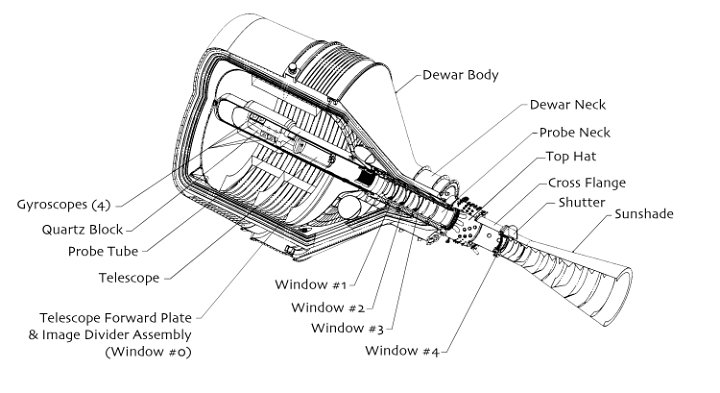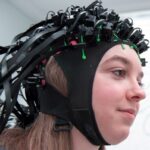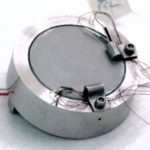An audacious and very costly orbiting science experiment set out to verify a subtlety of General Relativity by pushing the boundaries of science and engineering but ended with inconclusive and frustrating results.
Gravity Probe B was intended to measure the unmeasurable. Part 1 explored the principle, and Part 2 explored the plan of the experiment and instrumentation. This part describes the implementation of the Gravity Probe B.
Engineers know that the difference between a basic project and one that works in the final application is the packaging. It’s the same with GP-B. Any outside disturbances, especially magnetic fields, affect the readings. To prevent any such impact, the gyro rotor and SQUID assembly is housed in a lead balloon — literally (Figure 1). Otherwise, external magnetic fields would penetrate the superconducting shell. GP-B uses a series of four lead bags or balloons. The designers inserted the gyro assembly into the first bag and then cooled it to superconducting temperatures and expanded it, further lowering the magnetic field. They inserted the first bag into the next bag, which undergoes the same cooling and expansion, and so on. This technique results in an enclosure with extraordinarily low (10–6 gauss) and stable magnetic field.

One more element is necessary to make the experiment viable: The gyro assembly must know which way it is pointing, for a calibration reference. The change in angle between the gyro rotor pointing and the reference direction indicates possible frame-dragging.
The reference technique most satellites and missiles use is to aim a telescope at a star. GP-B uses this same method, with enhancements. The entire SIA (science-instrument assembly) comprises the gyro and its spin detectors, which are referenced to the telescope, which in turn is referenced to the guide star.
In space, you can’t ask for directions
Both the telescope and the guide star used for GP-B are special. The 14-inch-long telescope, with a 5.6-inch diameter primary mirror, is made of fused quartz, the same as the gyro rotors. The four rotors and proof mass are housed in a fused-quartz block that is bonded to the rear of the telescope. The telescope’s twenty parts are neither cemented nor fastened together conventionally. Instead, they are assembled using “optical contacting,” in which the super-smooth, super-clean surfaces are pressed together. Then, through molecular adhesion, these disparate parts join themselves into one super component as if they had been made of a single, larger bock of material (Figure).
The chosen guide star is IM Pegasus (catalog designation HR8703), which is 300 million light years away. While it is not as bright as other stars, it has other useful attributes; although most people assume that a star is a true point source and thus perfect as a reference, the reality differs. No start is a perfect point source, but HR8703 has an angular diameter of just 1.3 milliarc seconds. Diffraction and other unavoidable factors scatter the light form HR8703 and spread its apparent image out to about 1400 milliarc-seconds. Yet somehow, the GB-B tracking system needs to find the optical center of this star’s image to 0.1 milliarc-seconds.
To achieve this, the probe uses dithering, a slow side-to-side motion through a small angle. (Note that dithering using added noise is also used with analog/digital converter circuits to “squeeze” one or two extra bits of resolution beyond their basic capability.) Stars move slowly across the sky against the cosmic background, and data based on observations from other satellites show that IM Pegasus migrates about 35 milliarc-seconds per year. This precision measurement is possible because the star is one of the brightest microwave-emitting sources in the sky, and it “rests” against a background array of quasars that are even further away and also excellent microwave sources. Together, these quasars form a frame of reference for seeing HR8703.
The designers tested many subparts of this complex experiment in other, unrelated projects or specially designed tests. In addition, the project used extensive modeling and simulation to shape the design, assess various operational and control strategies, generate code, and analyze the effect of error sources. Among other tools, the design team at Stanford used standard versions of Matlab and Simulink from The MathWorks.
Supercooling and superconductivity are critical to the experiment. The main body of the probe structure—the SIA—is housed in a 650-gallon Dewar flask or thermos bottle, which contains the supercooled liquid helium and thus maintains the probe at 1.65K (-271.4°C) (Figure 2). Nothing is wasted because the boil-off of this helium initially brings the rotors up to speed and subsequently fuels the spacecraft thrusters. The supercooled helium, as a passive container, must provide the proper environment for two years without needing refills.

Part 4 looks at the results of the GP-B project and the conclusions of NASA and other project participants.
References – EE World Online
- “GPS, Part 1: Basic principles”
- “GPS, Part 2: Implementation”
- “Magnetic resonance imaging (MRI), Part 1: How it works”
- “MRI, Part 2: Historical development (and lawsuits)”
- “Gyroscopes, Part 1: Context and mechanical designs”
- “Gyroscopes, Part 2: Optical and MEMS implementations”
External References
A project as extensive, expensive and recent as Gravity Probe B has an enormous set of documentation and references ranging from well-written articles to detailed Stanford NASA reports, as well as extensive images, photos, and graphics; some of the references link, in turn, to other references. If you are interested in GP-B, there’s plenty to read and absorb, including a 600-page NASA final report posted online.
LIGO, LAGEOS, and GRACE missions
- LIGO Caltech, “2017 Nobel Prize in Physics Awarded to LIGO Founders”
- Photonics Media, “LIGO Continues Making Waves”
- NASA, “Now 40, NASA’s LAGEOS Set the Bar for Studies of Earth”
- NASA, “GRACE Mission Overview”
GP-B: Stanford University
- Stanford University, “Gravity Probe B: Testing Einstein’s Universe”
- Stanford University, ”Overview of the GP-B Mission”
- Stanford University, “The Extraordinary Technologies of GP-B”
- Stanford University, “Frequently Asked Questions”
- Stanford University, “Image Gallery”
- Stanford University, “Gravity Probe B Presentations” (organized list of various presentations)
- Stanford University, “Gravity Probe B Scientific Papers” (organized list of technical published papers)
GP-B: NASA
- NASA, “ Science Results— NASA Final Report, December 2008”
- NASA, “NASA’s Gravity Probe B Confirms Two Einstein Space-Time Theories”
- NASA, “Post Flight Analysis–Final Report, March 2007” (600+ pages)
GP-B: other sources
- Aviation Week, “NASA Set to Test Einstein’s Theory,” April 12, 2004
- AAAS Science, “At Long Last, Gravity Probe B Satellite Proves Einstein Right,” May 4, 2011
- New Scientist, “Gravity Probe B scores ‘F’ in NASA review,” May 20, 2008
- APS Physics, “Viewpoint: Finally, results from Gravity Probe B,” May 31, 2011
- Sky & Telescope, “Gravity Probe B: Relatively Important?,” May 6, 2011
- IEEE Spectrum, “The Gravity Probe B Bailout,” October 1, 2008





